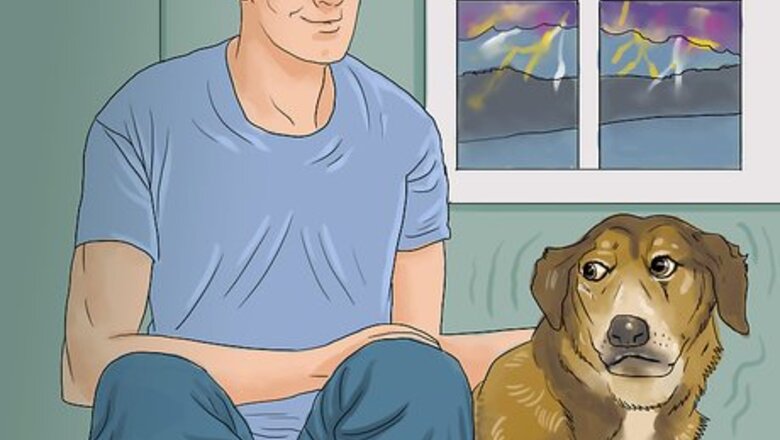
views
Calming Your Dog
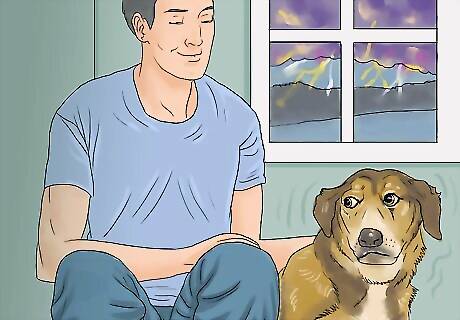
Call your dog as the storm begins. Don't wait until the storm is fully underway to find your dog. Call your dog to your side as soon as you hear thunder.
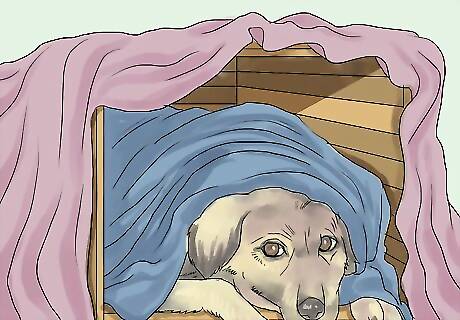
Remain calm. Your dog can sense anxiety. If you are upset, your dog will know, and this will only make matters worse. During a storm, give your dog no indications that something is wrong. Follow the same routine you would any other night. Smile and speak in a calm, reassuring tone. Even reassuring the dog can convince it that something is wrong. Help your dog by being calm and happy, not by overloading it with sympathy. Soft singing can help calm some dogs.
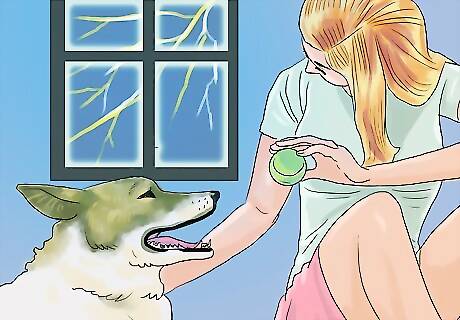
Find a safe place. Find a small "safe spot" for the dog to hide. Ideally, this spot will block light and noise, while allowing the dog to be near its owner. Here are a few options: Under a table or bed In a dog crate, with a blanket draped over it In a closet or windowless bathroom
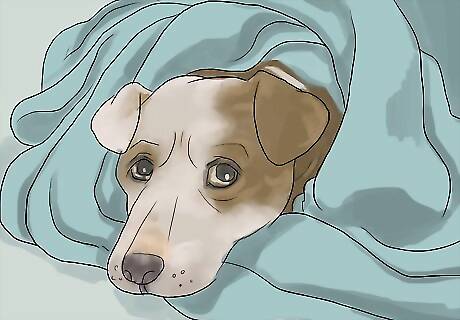
Swaddle your dog. Try wrapping a garment around your dog or let the dog huddle under your arm on the sofa. Your dog may feel reassured by the added pressure, much like a baby feels safe when swaddled. If this seems to help, consider buying a special anti-anxiety garment, such as the Thundershirt or Anxiety Wrap. The garment should be snug around the dog's chest, but make sure you get one in the correct size for the best result, to ensure the acupressure points throughout the body are being targeted, and to avoid injuring your dog. Some of these garments (Anxiety Wrap) press against acupressure points associated with stress relief. If you're in hot weather conditions and are concerned about your dog overheating, some garments (Anxiety Wrap) can be moistened with water. The air flowing through the moistened fabric will act as a cooling agent. Always supervise your dog if you're concerned about health/safety. Some of these garments are also appropriate to put on your dog and help him/her stay calm if you need to leave the house. Consult the product directions for safety information.
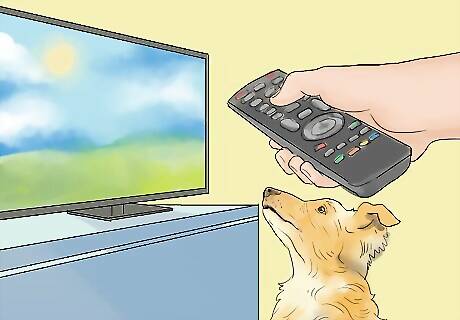
Block the noise. A loud television, music, or other source of noise (washing machine) can help drown out the thunder. Choose a sound your dog finds familiar and comforting. Covering the dog's ears can also help.
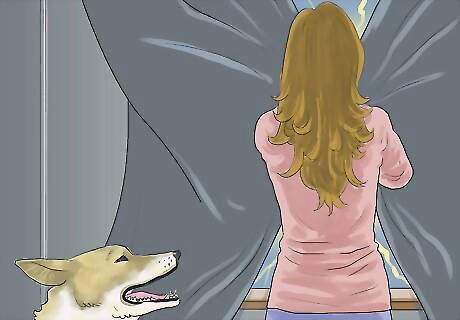
Avoid windows and the outdoors. If possible, keep your dog away from windows, or put up heavy curtains. Seeing the flash of lightning can be an additional source of anxiety. Block the dog's access to exits, since some scared dogs may try to run away or harm visitors.
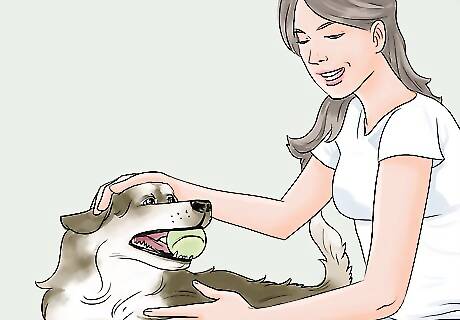
Play games. Encourage your dog to participate in indoor activities. You could play fetch or put on music and dance together. Try to find an activity that will turn your dog's attention away from the storm.

Consider home remedies. These include herbal and homeopathic remedies to treat anxiety. Always use remedies specifically intended for dogs. Some essential oils that work for humans may cause discomfort or injury in animals. Less concentrated doses are usually required as well. Be sure to consult your veterinarian before using, the oils are very concentrated and can be harmful to your skin as well as your dog's. They can also damage furniture. Lavender is one popular option that seems to help dogs, when used in the correct dose. Another option is petting your dog with a dryer sheet- it reduces static.
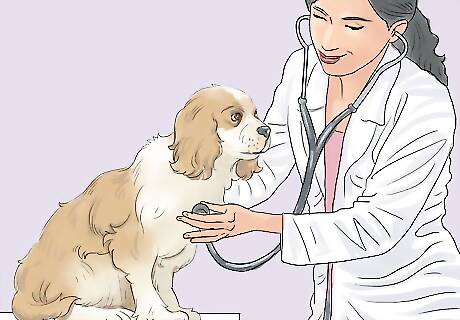
Talk to your vet about medication. If these methods are ineffective, ask your vet about anti-anxiety medications. Your dog can take some medications such as amitriptyline for the duration of the storm season. There are also quick-acting medications such as acepromazine ("Ace") or diazepam that can be taken for individual storms. To be effective, quick-acting medications must be administered before your dog exhibits any behavioral changes. Never give a dog medication without consulting a veterinarian first.
Preventing Your Dog's Fear
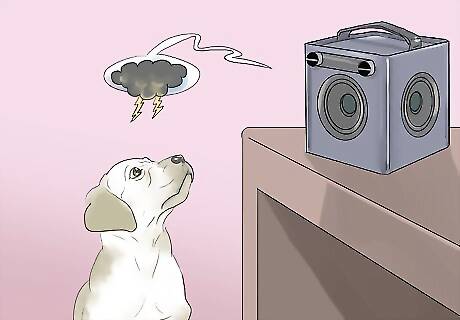
Desensitize your dog. To teach your dog that storms are nothing to fear, play a recording of a thunderstorm on very low volume for several hours, once a week. Each week, if the dog shows no signs of agitation, turn up the volume slightly. It can take a long time for your dog to adapt, but eventually your dog may learn not to fear thunder. If this agitates your dog too much, start with 5–10 minute daily sessions instead.
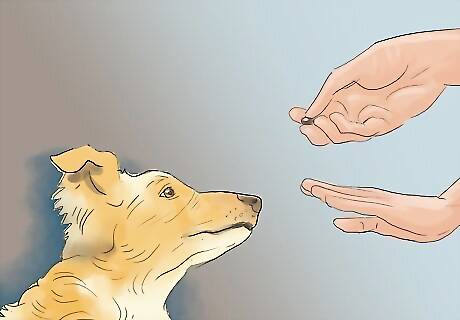
Encourage calm behavior. Give your dog a treat or a toy when it shows calm behavior during a storm, or when it obeys a command despite its fear. Train it to respond to a "relax," "calm," or "settle" command. Training your dog with an indoor leash is also highly effective. For example, treat your house like an indoor obstacle course and lead your dog around asking him/her to perform certain commands. If at any time this appears to be causing more stress, stop, and work on calming your dog.
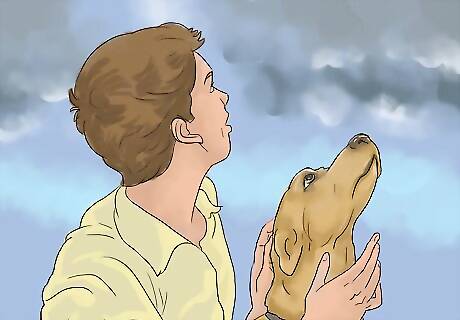
Anticipate your dog's fear. To curb stress and anxiety, engage with your dog before the storm hits. Prepare indoor activities, and make sure your dog's safe place is set up.



















Comments
0 comment